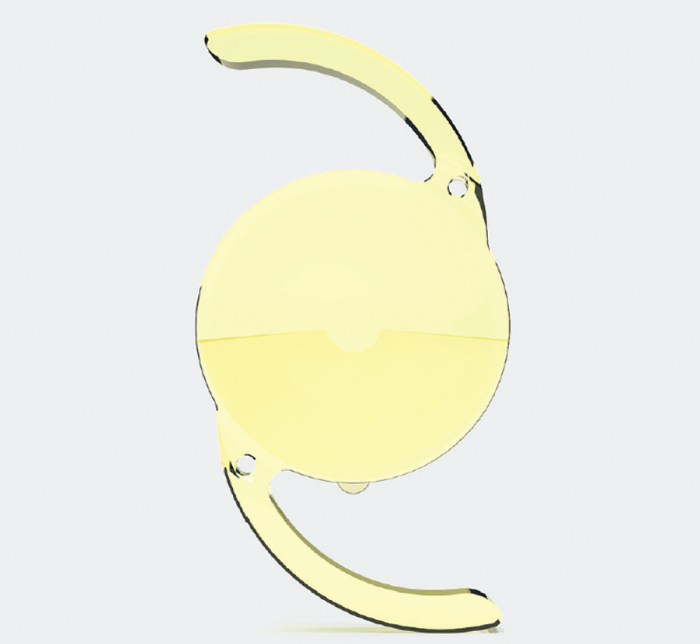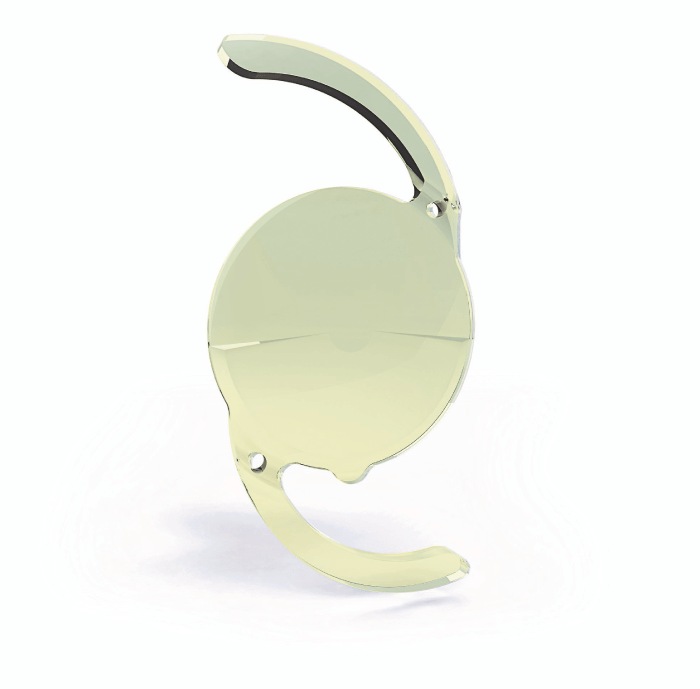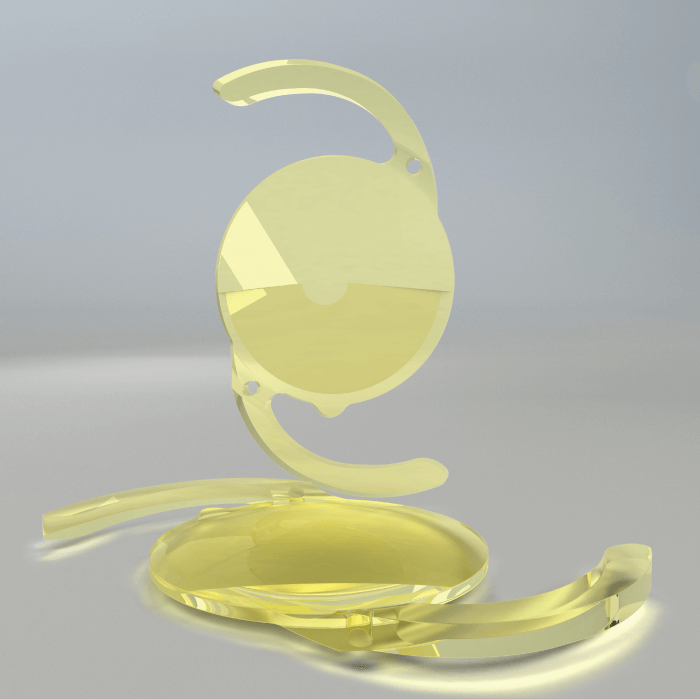
I first started using Teleon Surgical’s Acunex Vario and Acunex Vario Toric lenses in October 2019 and – with a considerable pause due to the COVID-19 pandemic – I have implanted just over 300 IOLs, with a small percentage of those being toric. The majority of my phaco surgeries are for cataract patients, of whom a considerable proportion elect to upgrade to some form of premium (non-monofocal) IOLs. I regard the Acunex Vario IOL as a low-power (1.5 diopter add at the lens plane) rotationally asymmetric zonal refractive EDoF implant. On that basis, I have found it suitable for almost any cataract patient looking to improve visual function beyond that of a standard monofocal lens.
The quality of vision – in particular, excellent contrast sensitivity and the lack of aberrations – make it a favorable choice for cataract patients across the board, including those with mild ocular surface disease, early maculopathies, or a diagnosis of glaucoma. Are there any instances when I would not consider the Acunex Vario? When near vision is already compromised or total spectacle independence is anticipated (through patient choice, the need for prisms, or some form of spectacle tint).
I now use the newly available toric lens for any patient with more than 0.75 diopters of corneal astigmatism, which can be either Barrett-corrected from anterior corneal evaluation or, when we have the facility to measure posterior corneal curvature, total corneal power. For non-toric cases, I don’t undertake any special investigations. The only cut-off in terms of refraction are the constraints of lens power availability with a range of 10–30 and a toric correction at the lens plane up to 3 diopters.
Suitability checks
I use various biometry or topography-measured estimates of angle alpha as a guide to positioning for optimal outcomes. I frequently use the Acunex Vario as a means of augmenting monovision, the latter being my standard practice with monofocal lenses wherever possible. My goal is excellent quality, aberration-free vision with spectacle independence for distance and intermediate tasks. All patients are counseled regarding the need for postoperative near vision correction, but this can be minimized by tailoring second eye myopia to maximize the first eye outcome. With this in mind, I aim to position the lens such that the distance segment is most definitely on the visual axis. For the vast majority of patients this means orientating the lens with the near zone temporal and I refine this according to the x, y coordinates on the white-to-white estimate of the implanted lens position relative to the visual axis. My rationale always is to sacrifice extended depth of focus in favor of quality in the first eye and, when needed, enhancing this with a higher degree of myopia in the second eye. I initially targeted the second eye for approximately -0.75 diopters, but in many cases have been able to increase this. On several patients I have returned to theater to implant a sulcus-fixated correction to push the myopia beyond 1.5 diopters in patients clearly demonstrated by their optometrist to tolerate higher degrees of monovision in the pursuit of complete spectacle independence.
No aberrations, exceptional quality
For me, the overwhelming advantage of these lenses is quality in the absence of aberration. My experience is that the incidence of photic phenomena (both positive and negative dysphotopsias) is rarer than with many monofocal lenses. Indeed, I have seen no patients with negative dysphotopsia (noting that implanting in line with angle alpha tends to favor an orientation which would decrease this anyway). My experience with this lens dates back less than two years, but I have not yet performed a YAG capsulotomy.
The unaided distance vision and visual acuity with Acunex Vario and Vario toric has been equal to any monofocal. More importantly, although somewhat anecdotally, I feel the quality of this lens is exceptional even in those patients who haven’t quite achieved the unaided Snellen vision I would have hoped for. Patient satisfaction in terms of spectacle use is of course completely dependent upon pre-op counseling; to date, my practice has been to inform patients that reading spectacles will most definitely be needed. However, I am regularly pushing – with increasing confidence – for higher levels of myopia in the second eye, so this is something I will refine where appropriate in the future.
We have dozens of reports of excellent quality and happy patients, which is why this lens continues to be my current first choice from the EDoF stable. The pandemic has compromised our ability to perform the rigorous follow-up and refraction we would have hoped for, but extensive data have been gained from those able to return to clinic, from telephone consultations, and from optometrist feedback. Subjective evaluation is excellent, with the overwhelming majority of patients reporting brilliant clarity with minimal aberration and the desired focal range. Good subjective vision is maintained for small degrees of refractive error and the presence of comorbidities.

From a surgeon’s perspective
I find the Acunex Vario stiffer than many IOLs. We warm all lenses prior to loading and use the Medicel Accuject 2.1 mm backloading device. I hold the lens by the trailing optic, minimizing contact with the optic and gently reflect the leading haptic back over the optic before inserting quickly into the cartridge. The position of the trailing haptic appears irrelevant. It is important to ensure that the leading haptic has indeed been reflected back before proceeding. The lens is smooth to unfold and, whereas I would normally position an implant with the irrigation aspiration cannula, I regularly use the viscoelastic cannula to push the trailing half of the optic and haptic into the capsular bag. I then wait briefly before removing viscoelastic from behind the lens to prevent the IOL from dislocating forwards. I insert a capsular tension ring before all toric implantations and am sure to wait an extra minute or so to be sure the lens has fully unfolded before accepting the final dialled axis position.
As with other EDoF lenses demonstrating a wide depth of focus curve around emmetropia and a broad “landing zone,” it is possible to push for a little myopia in the dominant eye whilst still anticipating a very acceptable distance vision outcome. With the A constant of 119.3, I now aim for -0.3 in the dominant eye unless there is a highly specific reason for that patient to demand far vision focusing above all else. With the occasional case where the first (emmetropic) eye emerges slightly more myopic than intended, a balanced outcome with the second eye, or even a tiny amount of crossed monovision seems to work perfectly well.
I think the Acunex Vario is an excellent lens for those surgeons who have been frustrated by loss of contrast or dysphotopsias with multifocal or trifocal lenses and are looking for a high-quality implant in a patient happy to wear reading spectacles. With increasing confidence and higher levels of monovision then the need for reading glasses can be minimized – but this is simply not my primary goal with this lens. I have seen very good results across the refractive range, and – on a purely anecdotal level – high myopes have done exceptionally well. For any patient familiar with contact lens monovision, emulation with this lens is a logical choice.
Finally, the support of Teleon Surgical has been excellent, and its scientific advisors have gone out of their way to help with my understanding of lens positioning and the optimization of IOL performance.

